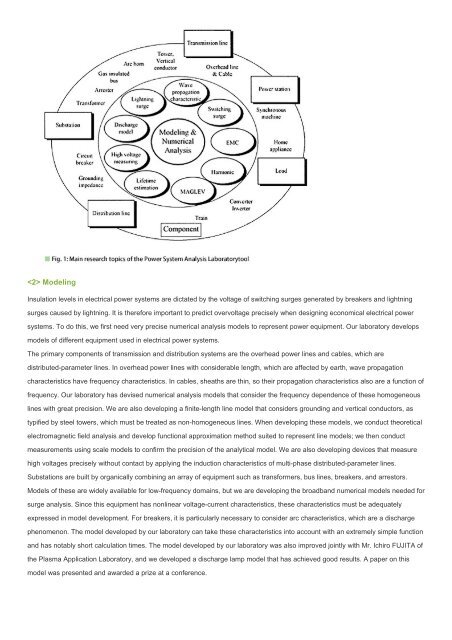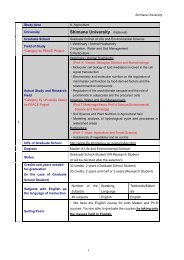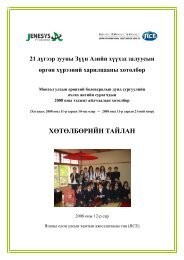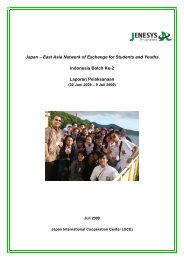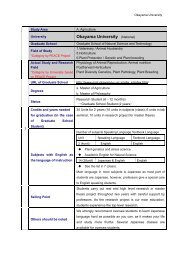Doshisha University (Private)
Doshisha University (Private)
Doshisha University (Private)
Create successful ePaper yourself
Turn your PDF publications into a flip-book with our unique Google optimized e-Paper software.
Modeling<br />
Insulation levels in electrical power systems are dictated by the voltage of switching surges generated by breakers and lightning<br />
surges caused by lightning. It is therefore important to predict overvoltage precisely when designing economical electrical power<br />
systems. To do this, we first need very precise numerical analysis models to represent power equipment. Our laboratory develops<br />
models of different equipment used in electrical power systems.<br />
The primary components of transmission and distribution systems are the overhead power lines and cables, which are<br />
distributed-parameter lines. In overhead power lines with considerable length, which are affected by earth, wave propagation<br />
characteristics have frequency characteristics. In cables, sheaths are thin, so their propagation characteristics also are a function of<br />
frequency. Our laboratory has devised numerical analysis models that consider the frequency dependence of these homogeneous<br />
lines with great precision. We are also developing a finite-length line model that considers grounding and vertical conductors, as<br />
typified by steel towers, which must be treated as non-homogeneous lines. When developing these models, we conduct theoretical<br />
electromagnetic field analysis and develop functional approximation method suited to represent line models; we then conduct<br />
measurements using scale models to confirm the precision of the analytical model. We are also developing devices that measure<br />
high voltages precisely without contact by applying the induction characteristics of multi-phase distributed-parameter lines.<br />
Substations are built by organically combining an array of equipment such as transformers, bus lines, breakers, and arrestors.<br />
Models of these are widely available for low-frequency domains, but we are developing the broadband numerical models needed for<br />
surge analysis. Since this equipment has nonlinear voltage-current characteristics, these characteristics must be adequately<br />
expressed in model development. For breakers, it is particularly necessary to consider arc characteristics, which are a discharge<br />
phenomenon. The model developed by our laboratory can take these characteristics into account with an extremely simple function<br />
and has notably short calculation times. The model developed by our laboratory was also improved jointly with Mr. Ichiro FUJITA of<br />
the Plasma Application Laboratory, and we developed a discharge lamp model that has achieved good results. A paper on this<br />
model was presented and awarded a prize at a conference.


